
views
Clearing and Drilling the Wall
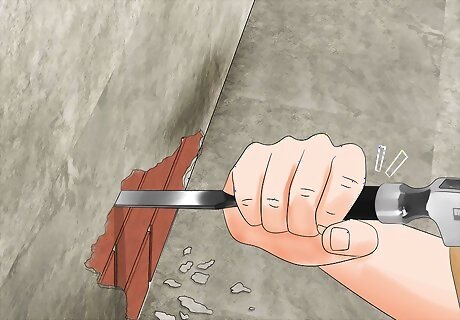
Cut through the wall render from the inside with a hammer and chisel. Look for areas that are discolored and feel wet to the touch along your wall. Wear thick work gloves and pull off any loose or weak pieces of your wall by hand. After you’ve taken off as much as you can, place the blade edge of your chisel against the wall 3–4 in (7.6–10.2 cm) above the highest part of the rising damp. Hit the end of your chisel with your hammer to break the wall render apart. Remove all of the area affected by the rising damp down to the floor. The render is the plaster or cement-like material covering your brick wall. If you need to cut through a plaster wall finish, use an angle grinder to cut through it quickly. You do not have to remove the render from your entire room if rising damp is only affecting a portion of the wall.

Drill a hole every 2 ⁄2 in (6.4 cm) along the lowest mortar line. Use a hammer drill with a ⁄2 in (1.3 cm) masonry bit. Place your drill in between the first and second layer of bricks up from your floor, also known as the mortar line. Pull the trigger on your hammer drill and apply firm pressure to put a hole into the mortar. Continue making holes across the affected area so they’re 2 ⁄2 in (6.4 cm) apart, or have 3 holes per brick. Make sure each hole goes at least ¾ through the bricks. Look for hammer drill rentals from hardware stores near you if you don’t own one. Since drilling through brick kicks up a lot of dust, wear a facemask and safety glasses.Tip: If you’re treating rising damp on a wall that’s on the edge of your home, you can drill into your bricks from the outside if you want.
Vacuum the holes to clean out any dust. Use the hose attachment on your vacuum and hold it up to each hole to clean them out. Make sure to clear out all of the dust or else the DPC won’t adhere as well.
Applying a Chemical DPC
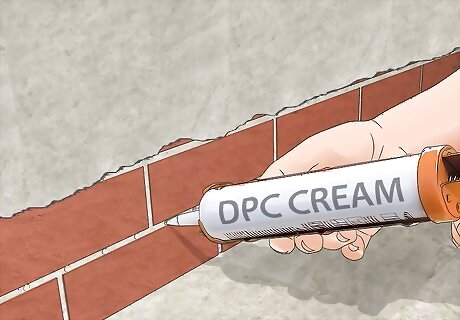
Pipe a DPC cream into the holes with a caulk gun. Load the tube of DPC cream into your caulk gun and cut the tip of the nozzle off. Stick the nozzle into the hole as deep as you can and pull the trigger on the caulk gun. Let the hole fill up with the cream, slowly pulling the nozzle out from the hole. Repeat the process for each hole in your bricks. The amount of DPC cream you need depends on the length and thickness of your wall. Get 1 US gal (3.8 L) of DPC cream for 30 ft (9.1 m) of coverage for a wall that’s 9 in (23 cm) thick. DPC cream can be purchased at hardware stores or online.Tip: If you do not have a caulk gun, you can also use a pressure pump pack like what you would use for a garden sprayer.
Alternatively, DPC fibre rods can be purchased at hardware stores or online. Fibre rods remove the need to calculate the correct amount of DPC Cream and prevent overspill.

Let the cream set overnight. Over time, your cream will turn into a liquid and absorb into the surrounding bricks to make them waterproof. Leave the cream alone for at least 12 hours so it has a chance to set inside.
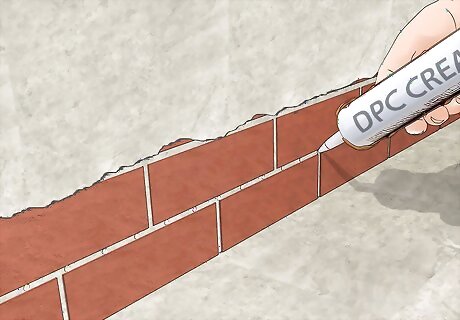
Put in another cream treatment the following day and allow it set. Once the first application of cream has set, put the nozzle of your caulk gun back into each of the holes and apply another layer of the cream. Let the cream set again for another 12 hours so it absorbs into the pores in the bricks. Depending on the size of the area affected by rising damp, you may need to buy another package of DPC cream.
Repairing the Wall
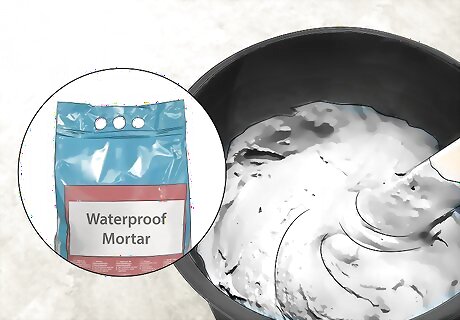
Mix a waterproof mortar in a 5 US gal (19 L) bucket. Choose a 30 lb (14 kg) bag of premixed waterproof mortar from your local home improvement or hardware store. Pour the bag of mortar into the bucket along with 2 US qt (1.9 L) of water and mix it thoroughly with a trowel. Keep mixing the mortar until it has a consistency like toothpaste.Tip: If you add too much water to your mortar, let it sit for 5-10 minutes so it can slightly solidify.
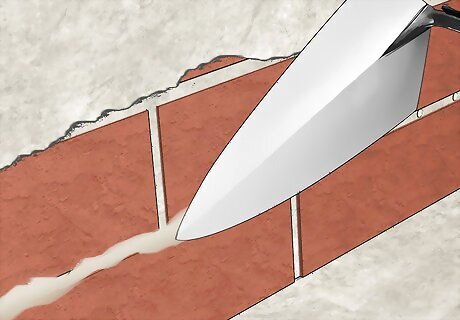
Trowel the mortar into the holes. Use a flat trowel to scoop the mortar out of the bucket and push it into the hole as far as you can. Scrape the mortar smooth so it’s flush with the rest of your bricks. Continue filling all of the holes with your mortar. If your mortar starts to harden while you’re working, pour a small amount of water into the bucket and mix it again. The mortar doesn’t have to fill the hole completely since the bricks around it are waterproof.
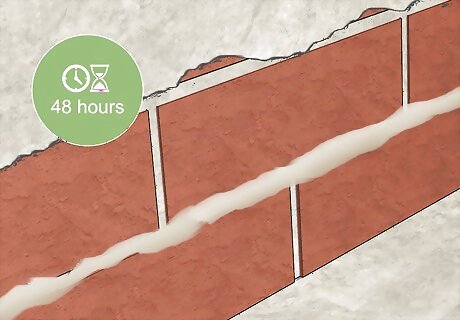
Let the mortar dry for 48 hours. Allow the mortar to set in the holes completely, which should take about 2 days. Make sure to leave the mortar alone during that time so it dries evenly inside the hole. If you used a fast-setting mortar, it may be completely dry within 1 day.
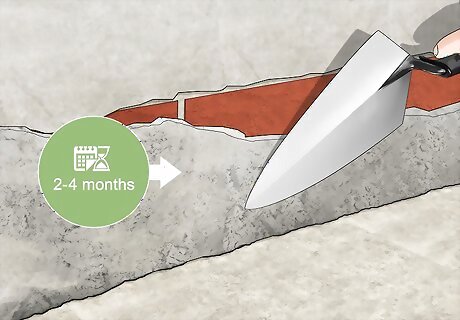
Wait 2-4 months before applying a new render. Since your wall was damp, it needs time to dry out. Let the wall completely air dry completely so moisture doesn’t get trapped behind the new render.




















Comments
0 comment